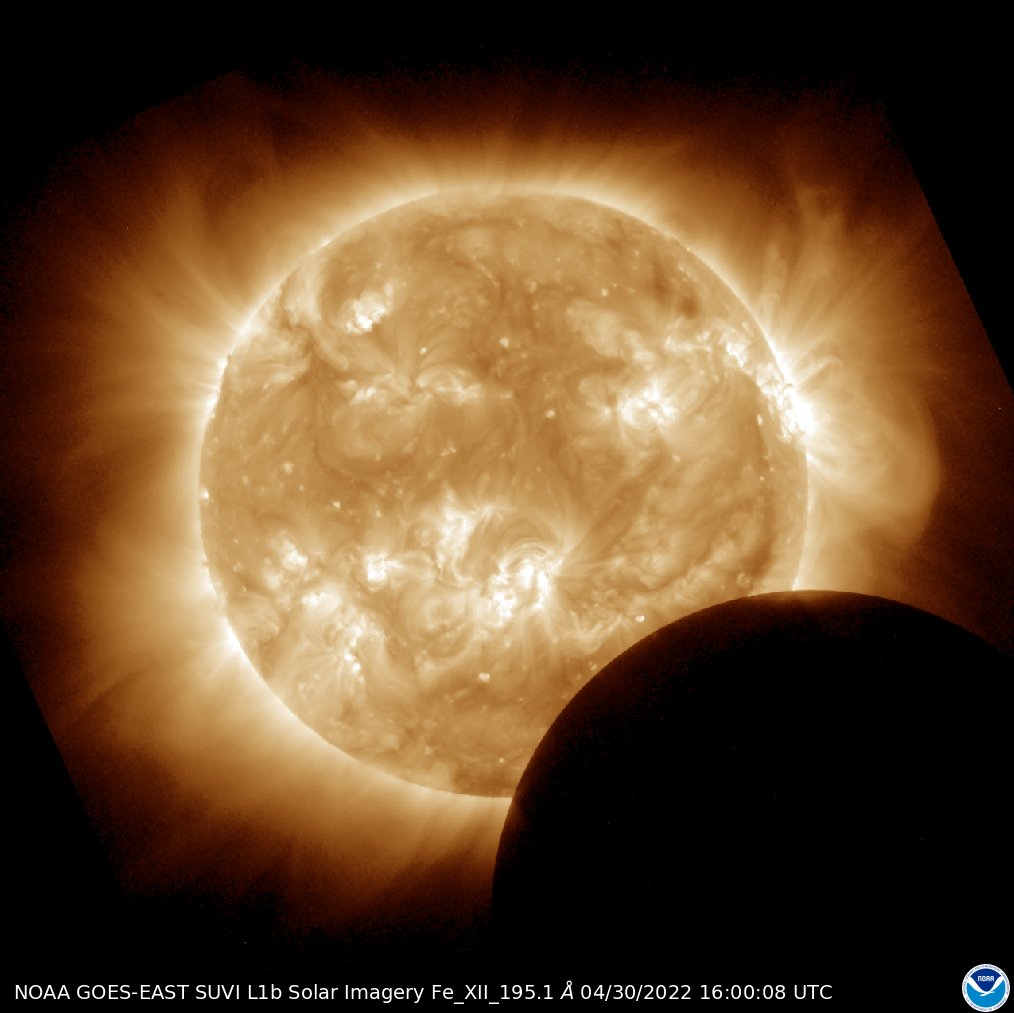On April 30, the first solar eclipse in 2022 took place on Earth. It was partial. The maximum phase of the eclipse was 64%. At the same time, the celestial phenomenon was observed in very sparsely populated corners of the Earth — the tip of South America, the coast of Antarctica and Easter Island.

In addition to ground observers, the solar eclipse on April 30 was also recorded by some satellites. One of the “eyewitnesses” of the event was the GOES-16 device belonging to the US National Oceanic and Atmospheric Administration (NOAA). Its photo shows a partially moon-covered solar disk.
Another NOAA-owned satellite (GOES-East) photographed a lunar shadow moving across the earth’s surface.
Despite the fact that this was a partial eclipse, the #GOESEast satellite caught a brief glimpse of the moon’s shadow approaching Chile from the west before it merged with the sunset.
Can you see it? https://t.co/SzgykpThNI pic.twitter.com/rb2x5BCfJn— NOAA Satellites (@NOAASatellites) May 3, 2022
The Cerro Tololo Inter-American Observatory also took part in the eclipse observations. Its animation demonstrates the moment of partial closure of the solar disk by the Moon.
Don’t blink, or you might miss it! The @NSF GONG telescope at @NOIRLabAstroES Cerro Tololo site (Chile) captured a glimpse of a partial #solareclipse over the weekend, visible in the Southern Hemisphere. This marks the first solar eclipse of 2022! #NSFfunded @cerrotololo pic.twitter.com/XSMkukxQlj
— NatlSolarObservatory (@NatSolarObs) May 2, 2022
You can also read about the total lunar eclipse that will take place on the night of May 16, 2022.
Follow us on Twitter to get the most interesting space news in time
https://twitter.com/ust_magazine

